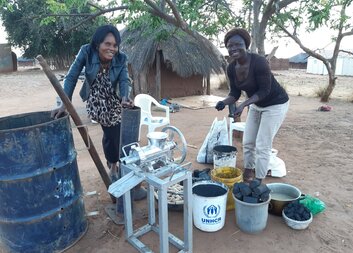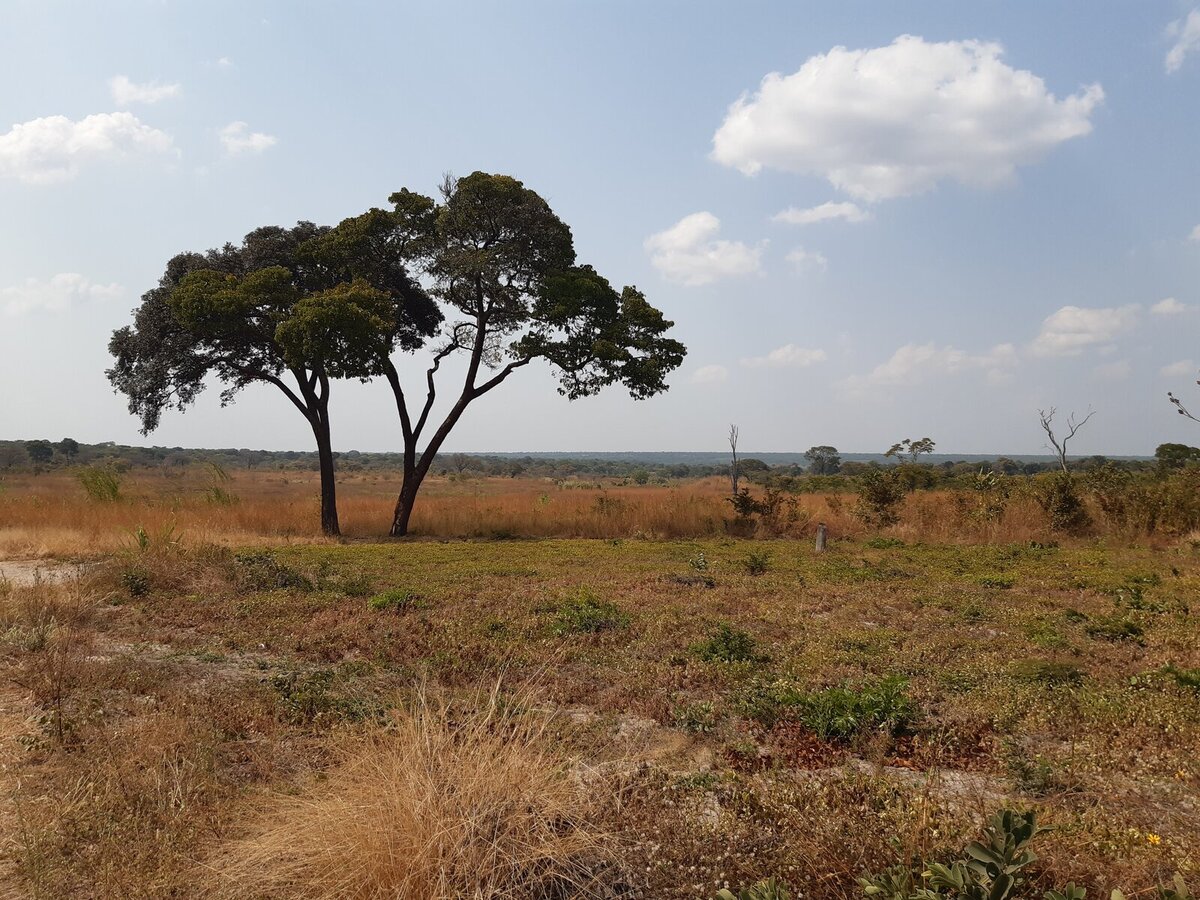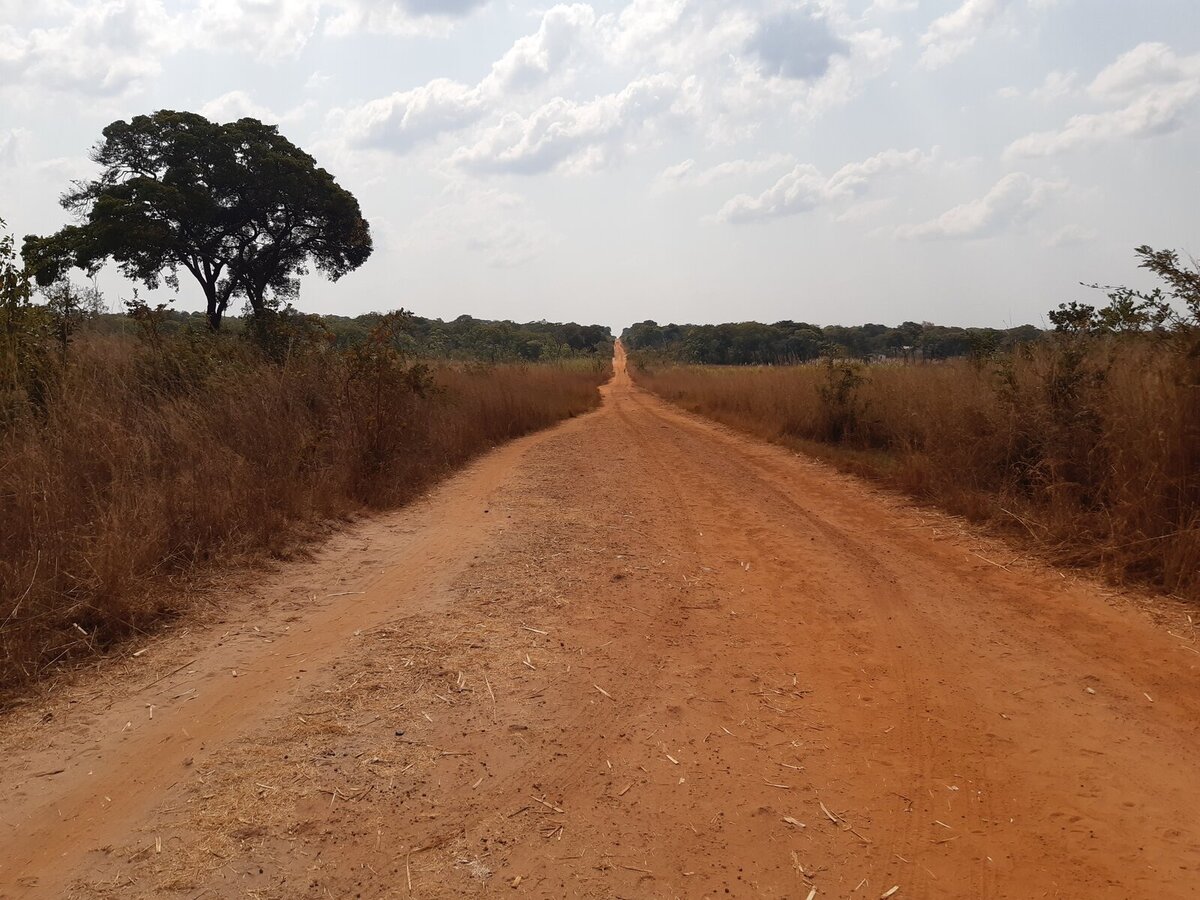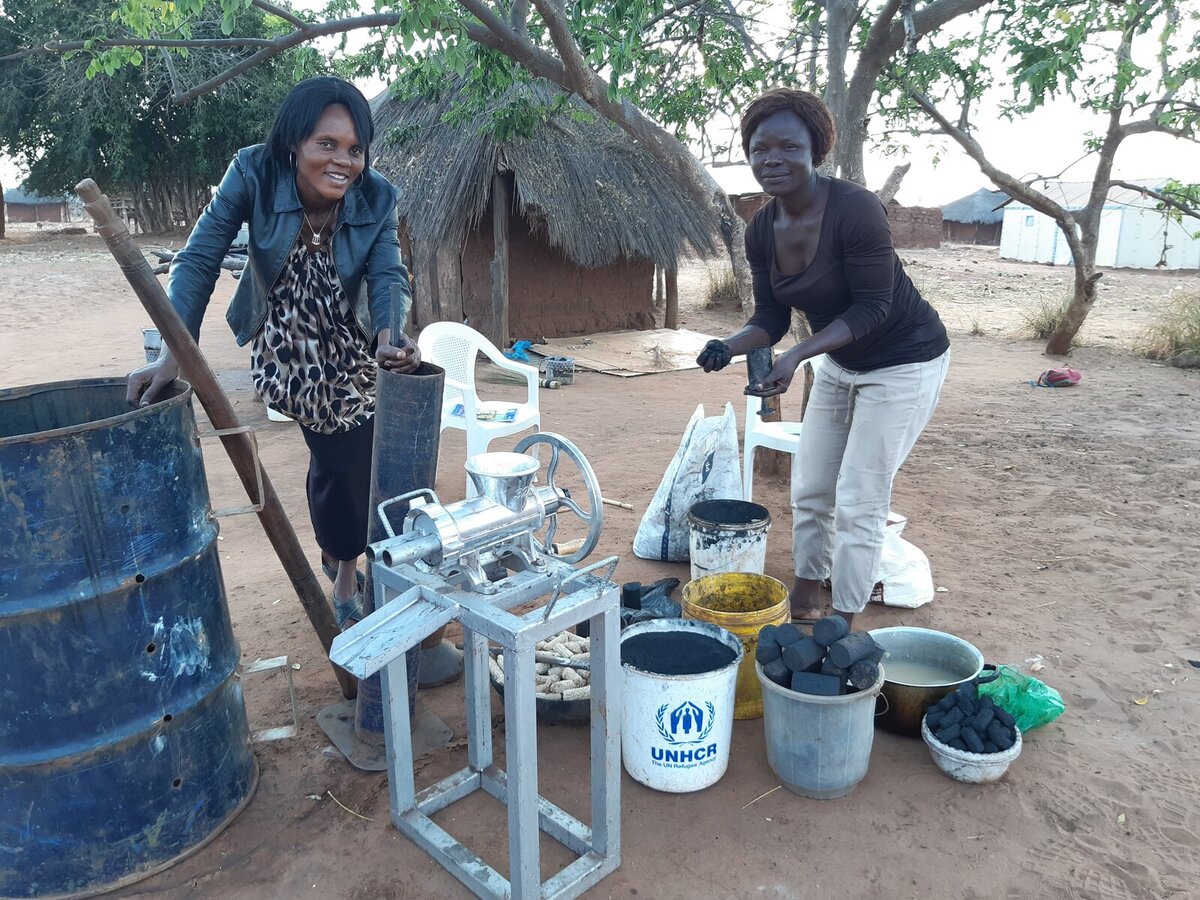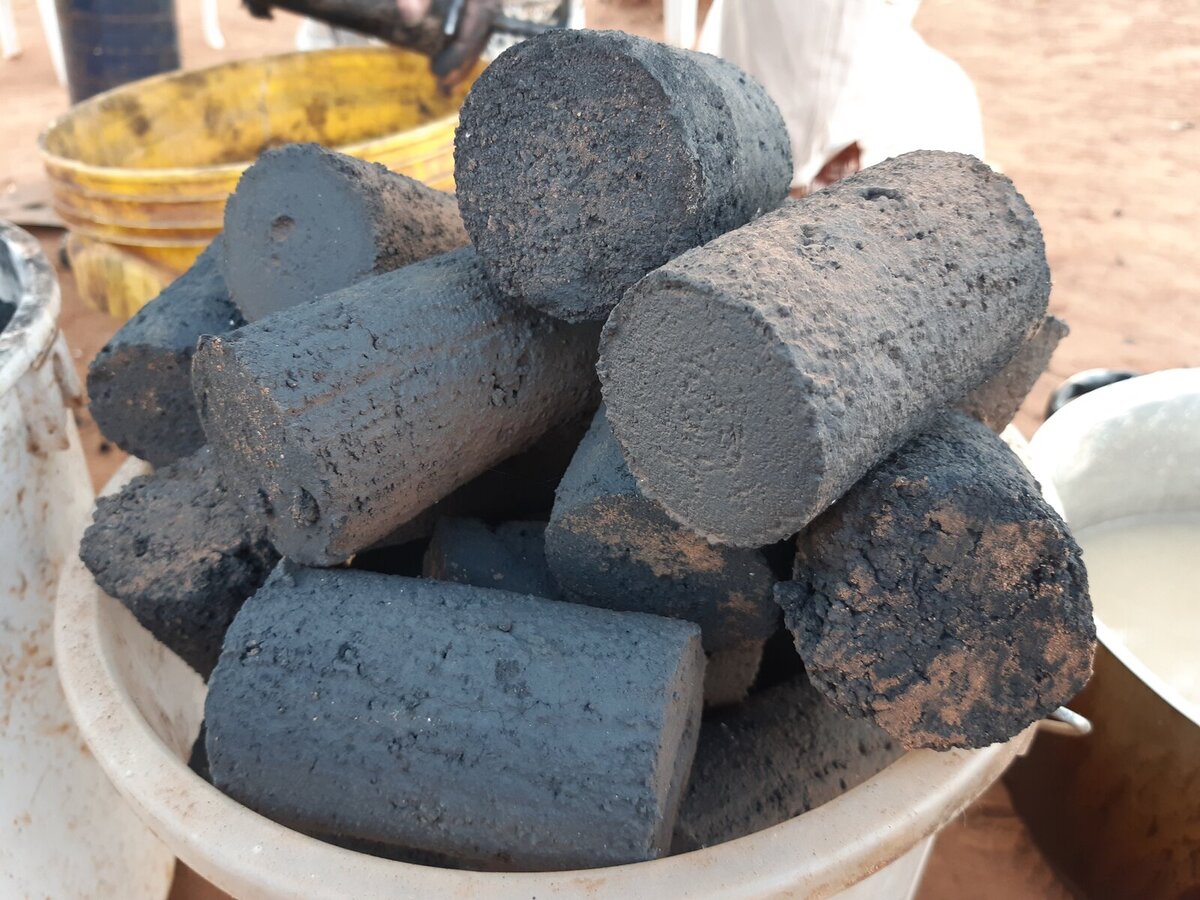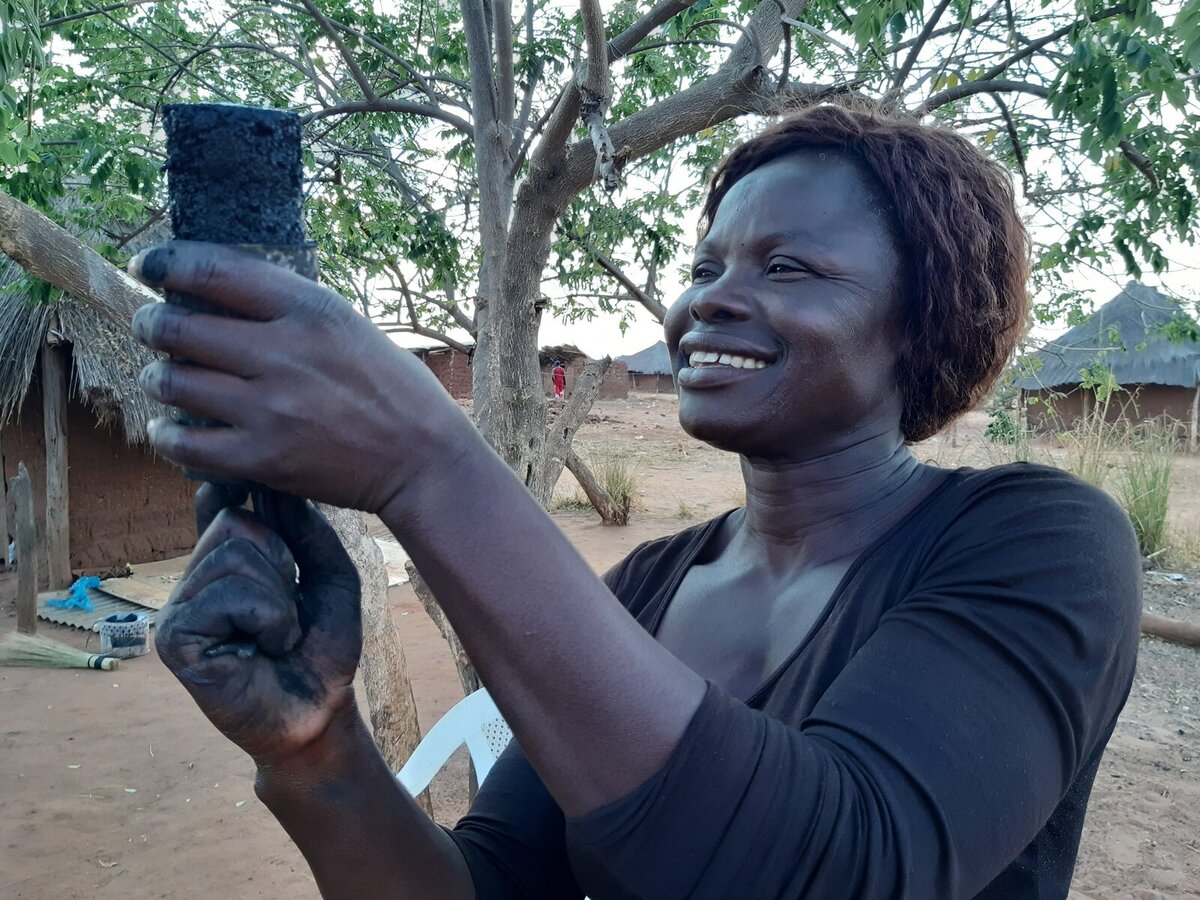Meet Sophie Kabamba Mukeny (45 married and mother of 7 children) and Elizabeth Kapinga (32, single), Congolese refugees living in Mayukwayukwa refugee settlement. They are part of the group of 20 women who were trained in 2021 by Caritas Czech Republic in making environmentally friendly green charcoal.
Why is deforestation such a serious issue in Mayukwayukwa?
Deforestation is among the many causes of climate change. Zambia has one of the highest deforestation rates in Africa. This is because many people living in rural areas, such as the Mayukwayukwa refugee settlement, cut down trees to make charcoal which they use for cooking and sell some of it to earn a living.
That is why Caritas Czech Republic introduces ways to avoid cutting down trees such as the production of green charcoal. In 2021, Elizabeth Kapinda and Sophie Kabamba took part in a series of training to learn about environmental conservation conversation through Green Charcoal Production. The ladies acquired essential knowledge on green charcoal production technologies, the effects of cutting down trees and what should be done to preserve the natural environment.
Elizabeth and Sophie are also members of the Natural Resource Management Committee which was formed in 2019 to reduce climate change through supervising the natural trees, training communities in Forestry management and protecting the trees from being cut down by village settlers in Mayukwayukwa.
Elizabeth Kapinga appreciates that she could learn about the threat that deforestation poses to the environment and to their future lives:
“We are thrilled we participated in the training because we have learnt something new. We have learnt how to preserve our natural resources and be environmentally friendly through green charcoal production. What I like personally is also the educational aspect - to tell people not to cut trees because trees are giving life to us.”
We have seen the negative effects of climate change with our own eyes
One of the main sources of making a living in Mayukwayukwa refugee settlement is farming. This means farmers often cut down trees when searching for better land for cultivation. This, however, does more harm to the environment and brings with it consequences - such as lack of rain in the area and strong winds with which Ms Elizabeth has a direct experience.
“The grass roof of my house was blown away because of the strong winds,” recalls Elizabeth Kapinga. Ms Sophie also mentions that cutting down trees globally is dangerous as there'll be a lack of oxygen which is so important for the lives of people. Both women are also aware that cutting down trees exacerbates climate change.
Elizabeth adds what other people from the settlement think of the importance of not cutting down trees in Mayukwayukwa:
“They agree that we should not cut down the trees because they say there is a lot of hunger. Hunger, I am telling you. Why? Due to the lack of rain. If we continue to cut down trees, I don't know where we are going to end. If we educate people, they will understand. They have seen it with their own eyes. Then they will stop cutting down trees. But it will take some time.”
Caritas Czech Republic is focused on protecting the environment and has over the years implemented projects that support environmental protection. Many farmers have been prompted to adopt conservation farming and use available technological advancements such as the Big Terra Mobile App that helps farmers to tackle climate change.
Sophie and Elizabeth talk about other benefits of green charcoal
Firstly, green charcoal lasts longer in comparison to regular charcoal (one needs only a few pieces of green charcoal to cook in comparison to a higher amount of regular charcoal). Secondly, it is easier to make. The green charcoal itself can be made in one day (and then it only needs a few days to dry in the sun) while making the regular charcoal takes much more time, about 3 to 4 weeks according to them.
Another benefit the ladies see is in the option of helping to sustain themselves and their families, as by selling they can earn money. As Elizabeth adds: “People like the green charcoal and ask us to make more so that they can come and buy.”
So how is the green charcoal made?
The benefit is that for producing the green charcoal biomass items are used. In this case, the women use the remains of their plant produce/crops - maize cobs. This biomaterial is then softly burned, pounded to ashes and after that mixed with a thin cassava porridge (which serves as a “glue” holding the substance together).
The next step in the process is to form the pieces of charcoal using either a machine or manual tools. Last but not least, the women dry the green charcoal pieces in the sun.
Sophie and Elizabeth become environmental advocates
Sophie and Elizabeth are also what we could call environmental advocates. They visit local schools and communities to talk about the importance of saving trees, using different methods such as drama play. They also plant trees and then they distribute the young tree plants for free among people in the community while educating them about the importance of trees.
Sophie and Elizabeth would also wish to have a machine which would help them to make the charcoal faster instead of forming the charcoal pieces manually. Sophie, Elizabeth and other women from the charcoal community have ambitious plans: “Our aim is to teach others. If a big number of people know the importance of this green charcoal, they will not cut trees. That's our aim.” says Ms Sophie.
Interested in more stories like this? Read more:
- How tailoring has enhanced Beya Biakunienga's life, thanks to Caritas Czech Republic
- Jean from Zambia is now the owner of a Cassava Processing business, thanks to Caritas
- We are now living comfortably, thanks to Caritas

